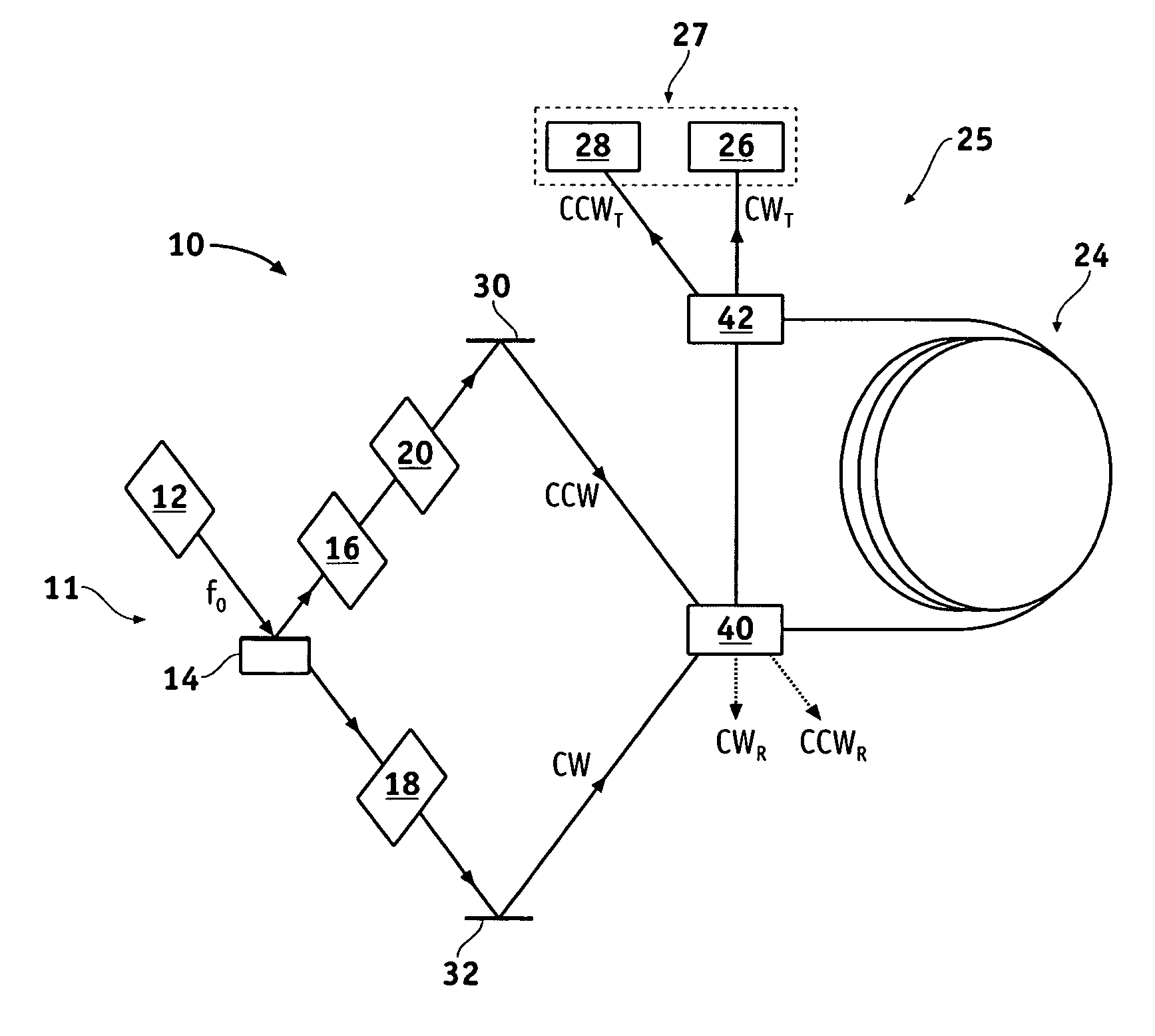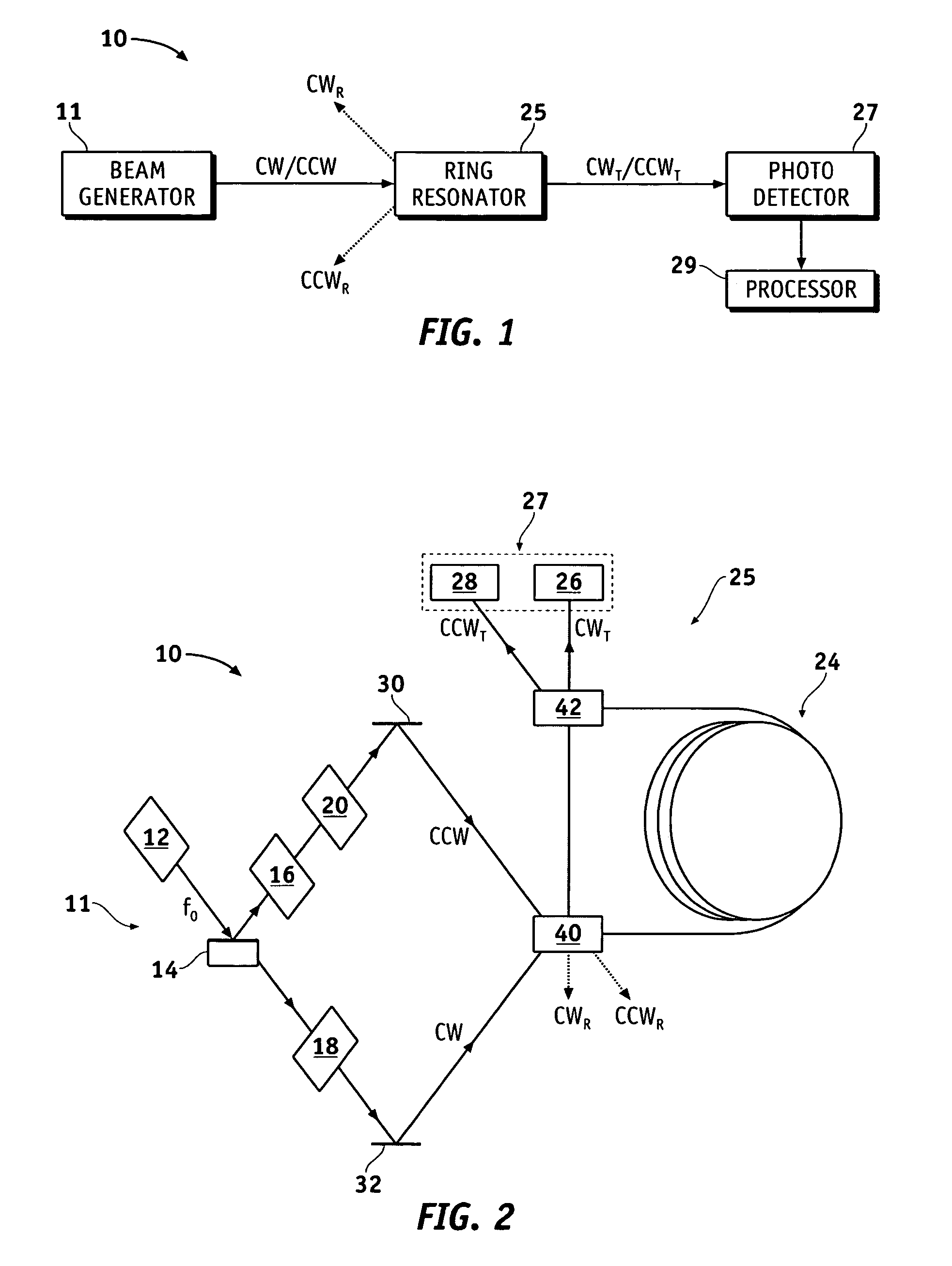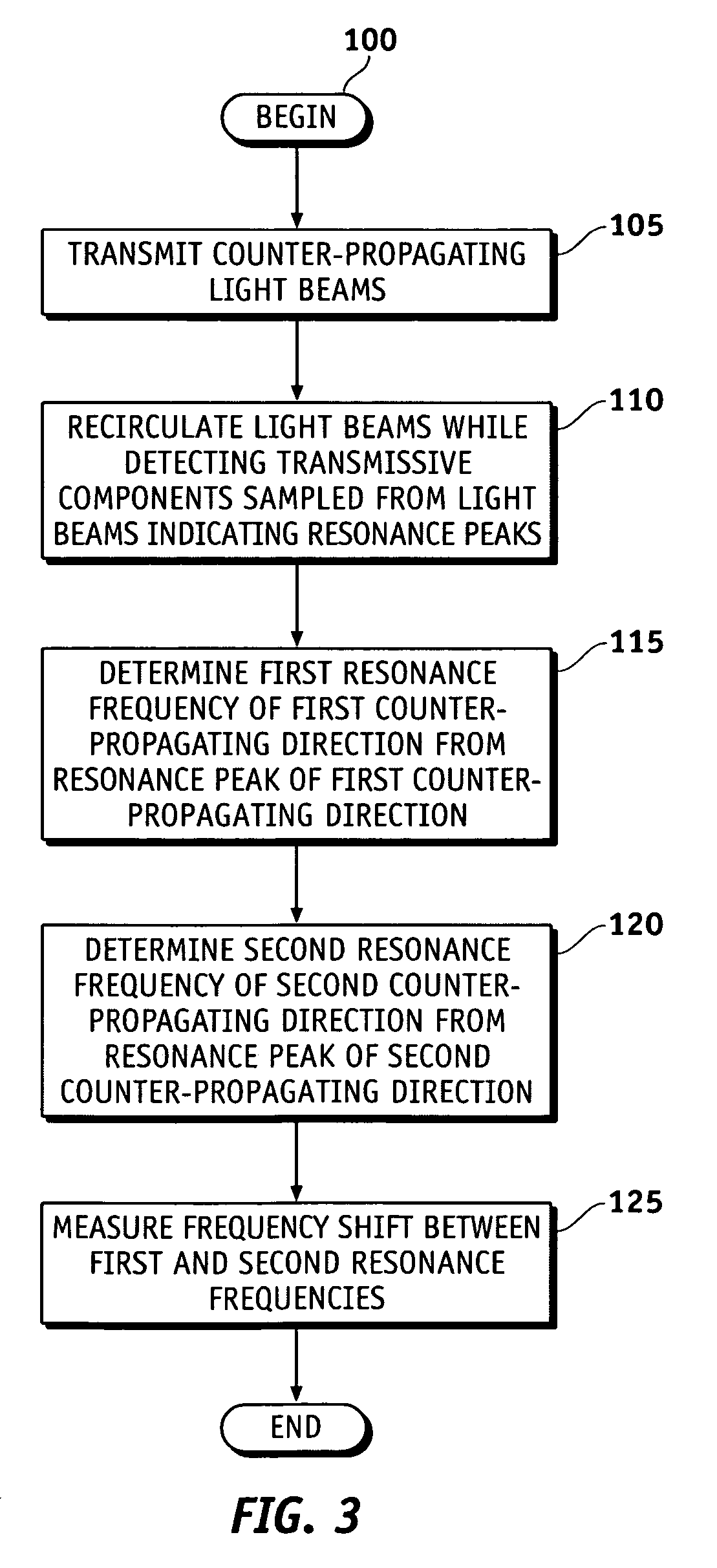Transmission mode RFOG and method for detecting rotation with RFOG
a technology of rotational sensor and transmission mode, applied in the field of gyro systems, can solve the problems of affecting the observed shape of the resonance dip, reducing the accuracy of the rotational rate measurement, and errors in the detection of the resonance center
- Summary
- Abstract
- Description
- Claims
- Application Information
AI Technical Summary
Benefits of technology
Problems solved by technology
Method used
Image
Examples
Embodiment Construction
[0019]The following detailed description of the invention is merely exemplary in nature and is not intended to limit the invention or the application and uses of the invention. Furthermore, there is no intention to be bound by any theory presented in the preceding background of the invention or the following detailed description of the invention.
[0020]Referring now to the drawings, FIG. 1 is a block diagram of a resonator fiber optic gyro (RFOG) 10 in accordance with an exemplary embodiment of the present invention. The RFOG 10 comprises a beam generator 11 configured to generate input light beams (e.g., a clockwise (CW) input light beam and a counter-clockwise (CCW) input light beam), a ring resonator 25 having an input for receiving the input light beams and having an output, a photodetector 27, and a processor 29 coupled to the photodetector 27. The ring resonator 25 receives the CW and CCW input light beams at the input, circulates a portion of these input light beams, and produ...
PUM
 Login to View More
Login to View More Abstract
Description
Claims
Application Information
 Login to View More
Login to View More - R&D
- Intellectual Property
- Life Sciences
- Materials
- Tech Scout
- Unparalleled Data Quality
- Higher Quality Content
- 60% Fewer Hallucinations
Browse by: Latest US Patents, China's latest patents, Technical Efficacy Thesaurus, Application Domain, Technology Topic, Popular Technical Reports.
© 2025 PatSnap. All rights reserved.Legal|Privacy policy|Modern Slavery Act Transparency Statement|Sitemap|About US| Contact US: help@patsnap.com



